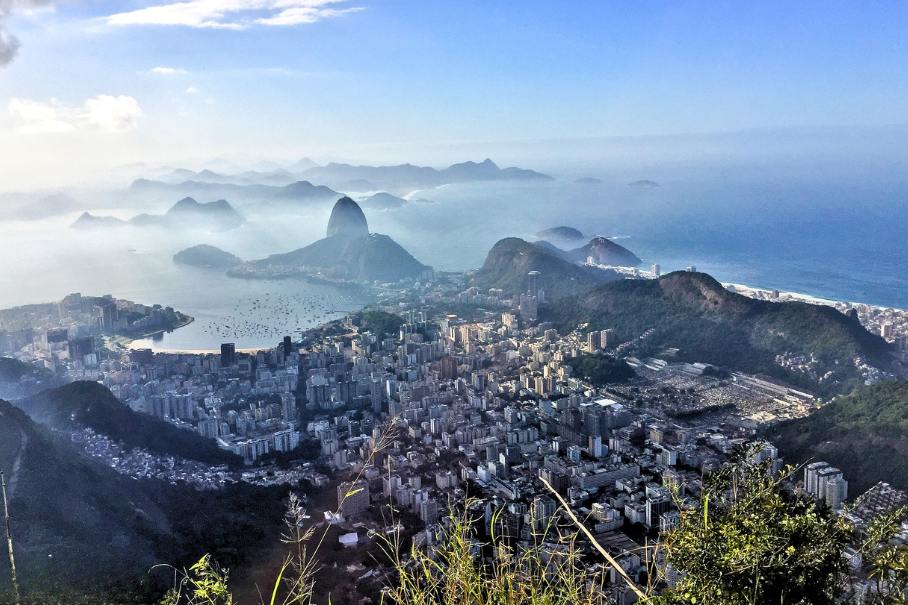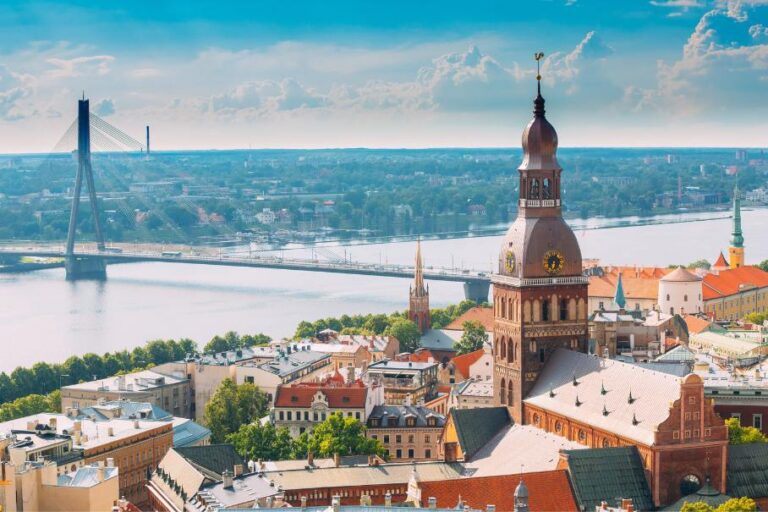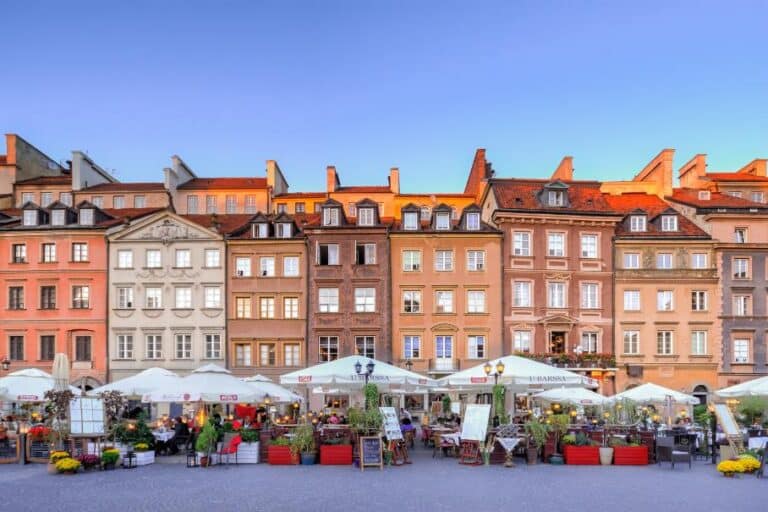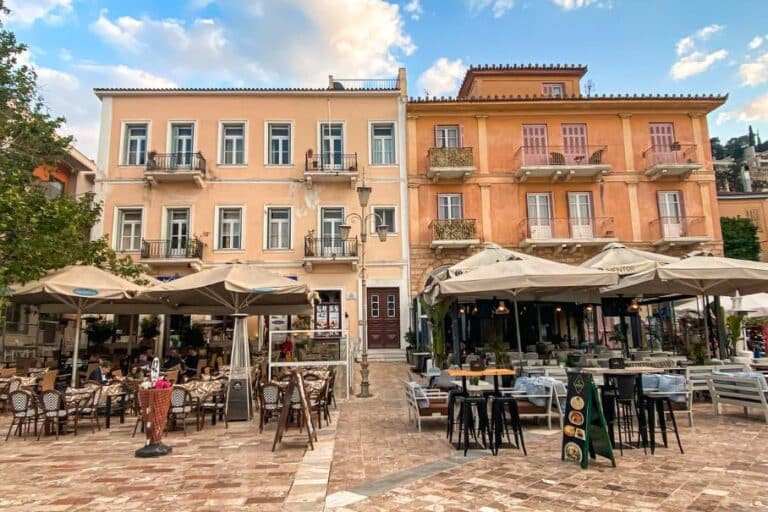Awesome Things to do in Rio de Janeiro on Your First Visit
Whenever I think of Rio de Janeiro, the words to Barry Manilow’s Copacabana always play in my head. Rio de Janeiro is a city of contrasts—chaotic and calm, rich and poor, ancient and modern. There’s something magnetic about it. Maybe it’s the beaches, the music, or the tropical heat. Perhaps it’s the way Brazilian people welcome you with open arms.
Either way, this marvellous city quickly finds its way into your heart. If you’re visiting for the first time or only have a few days, you’ll find no shortage of incredible experiences. Below is a list of the best things to do in Rio de Janeiro, whether you’re after breathtaking views, cultural treasures, or just want to chill on a beach.
Brief history of Rio de Janeiro
Rio’s story started long before it became the city we know today. Before the Portuguese settled here, it was the home of the Tupi and Guarani tribes. When the Portuguese arrived on January 1, 1502, they thought Guanabara Bay was a river mouth. Not knowing what to name this new place, they chose the date’s significance and called it Rio de Janeiro – January River. The name was officially adopted when the city was founded on March 1, 1565, by Estácio de Sá.
The French tried to set up a colony here for many years, but the Portuguese fought them off. Over time, Rio grew as a port city, shipping gold and diamonds from the mines inland back to Europe. A significant change came in 1807 when the Portuguese royal family fled from Napoleon’s armies. They moved the entire court to Rio, making it the capital of the Portuguese Empire. This was a rare historical event – a European power ruling from its colony.
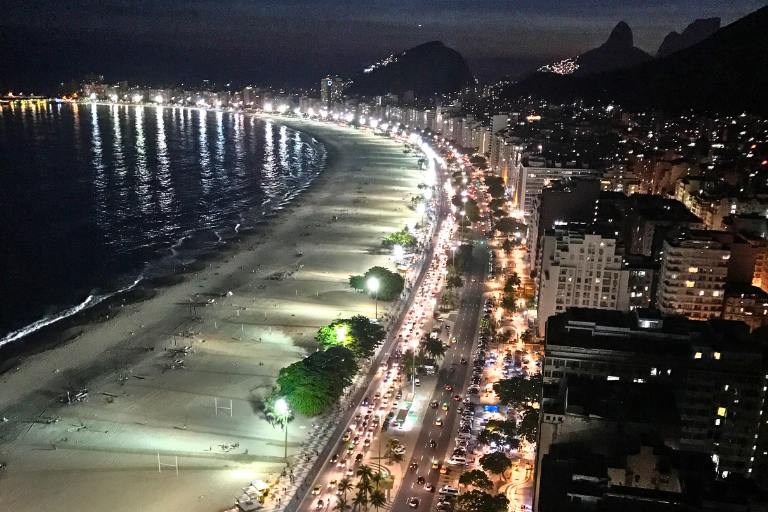
After Brazil gained independence in 1822, Rio stayed the capital until 1960, when it was relocated to Brasília. During this time, Rio grew into a major city with wide streets and grand buildings. In the 20th century, Rio became known worldwide for its beaches, Carnival, and the Christ the Redeemer statue. The 2014 World Cup and 2016 Summer Olympics hosted here put Rio in the global spotlight.
Awesome things to do in Rio de Janeiro
When I first saw Rio, I was blown away. The city sits between mountains and sea, creating views that look too perfect to be real. Locals call it “Cidade Maravilhosa” – the Marvellous City – for good reason. From the famous Copacabana shoreline to Christ the Redeemer standing tall on Corcovado Mountain, this city packs a punch for travellers.

There are many things to do in Rio de Janeiro, whether you’re here for a short city break or it’s the starting point of your Brazilian adventure. I’ve been to Rio a few times, and I think there is always something to keep you busy. Here are some ideas of things to do in Rio de Janeiro to add to your itinerary. It will give you a taste of what makes this city such a wonderful mix of flavours, sounds and cultures.
1. Visit the Christ the Redeemer statue
You can’t go to Rio and not visit its most famous landmark. With arms wide open, the Christ the Redeemer statue overlooks the entire city atop Corcovado Mountain. This iconic landmark is one of the most popular spots in Latin America. You can’t imagine the magnitude of the statue until you are standing underneath it. Plus, the panoramic views of Guanabara Bay and the Atlantic Ocean will take your breath away.
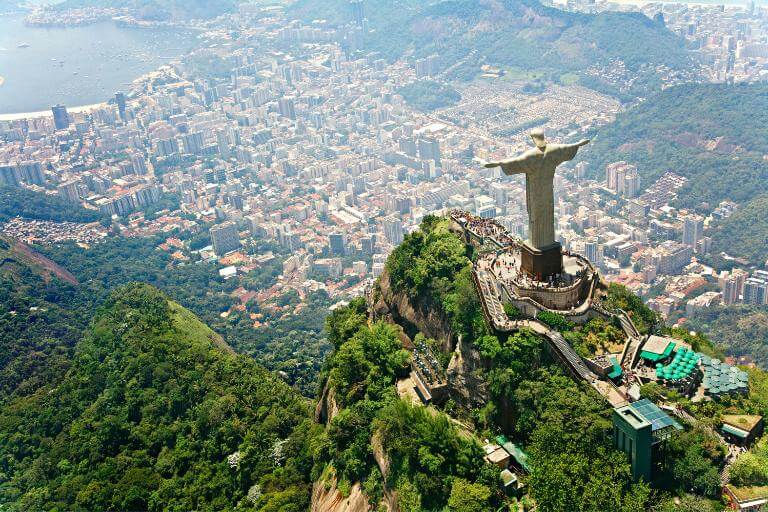
The statue is an example of the Art Deco style found in Rio. It is 30 metres (98 ft) tall with an 8 metre (26 ft) pedestal base and was sculpted by a French-Polish sculptor, Paul Landowski. The project took nine years to complete and is now recognized as one of the New Seven Wonders of the World.

It’s best to visit the statue before the crowds first thing in the morning. You can book a tour to take you there and to the top. The tour bus gets you to the entrance, and from there, you have to climb over 200 steps to the statue’s base. There are elevators that make some of the journey easier. It was really worth getting up at 6 a.m. as the views were spectacular.
2. Stroll along Copacabana Beach
One of the most popular things to do in Rio de Janeiro is to visit the Copacabana beach. As one of Rio’s famous beaches, it’s a popular destination for locals and visitors. Stroll on the beach or along the mosaic-tiled promenade for a taste of this lively neighbourhood. Overlooking the beaches are many fashionable hotels and high rises with sidewalk cafes and bars.
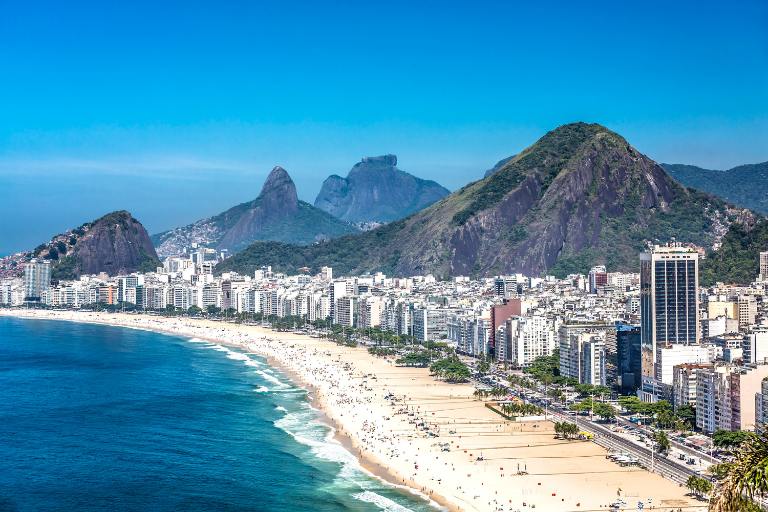
You might also want to stop by the Copacabana Fort, home to a military museum. Here, you can tour several exhibits dedicated to different periods and events in the Brazilian army’s history.
3. Grab a drink at the Copacabana Palace
Built in an Art Deco style on what was once the outskirts of Rio, the Copacabana Palace Hotel overlooks the beach that is its namesake. Like many similar hotels, this was once a playground for the rich and famous. From big-name movie stars, famous rock stars and artists to politicians and royals, many have graced these walls with their presence.
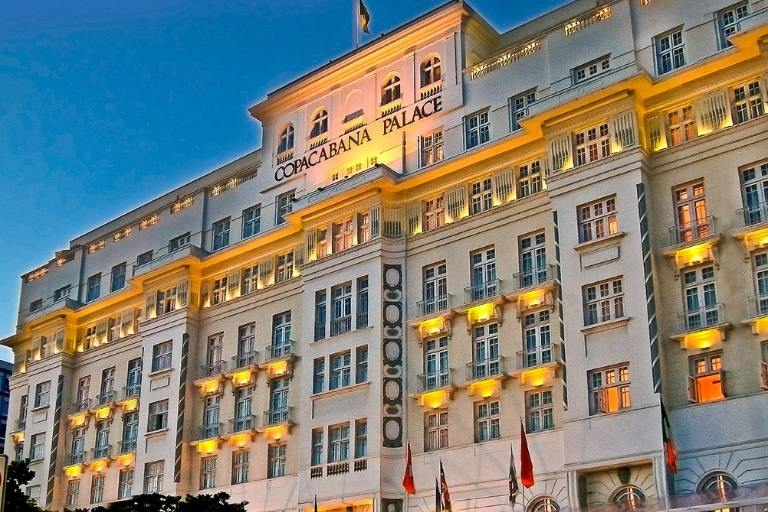
If the walls could speak, I’m sure they’d have many deliciously scandalous stories to tell. The hotel is not exactly budget-friendly accommodation, but if you’re able to stay here, I’m jealous! Actually, you don’t have to be a guest at the hotel to enjoy a drink by the pool, and I highly recommend that you do so.
4. Relax on Ipanema Beach
Like its sexy neighbour, the Copacabana, the Ipanema beach has its own claim to fame. I wasn’t quite aware of the Girl from Ipanema song until I came to Rio, but apparently, it’s pretty famous. Today, Ipanema Beach is known for its scenic views and social buzz.
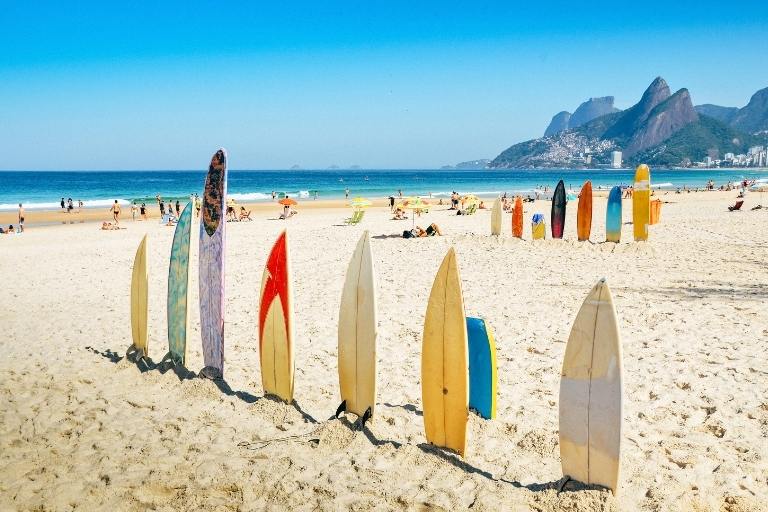
Much of this neighbourhood once belonged to José Antonio Moreira Filho, the Baron of Ipanema. This is where the name derives from. The Ipanema neighbourhood is rather upscale, with many restaurants, bars and shops frequented by locals and tourists alike. Whether sunbathing, surfing, or just sipping coconut water, this beautiful beach is a must. Look up, and you’ll see Morro Dois Irmãos, a striking mountain backdrop that adds to the vibe.
5. Admire the Escadaria Selarón steps
The Selarón Steps are one of Rio’s most eye-catching landmarks and should be on your list of things to do in Rio de Janeiro. The stairs are decorated with over 2,000 pieces of tiles and were created by Chilean-born artist Jorge Selarón.
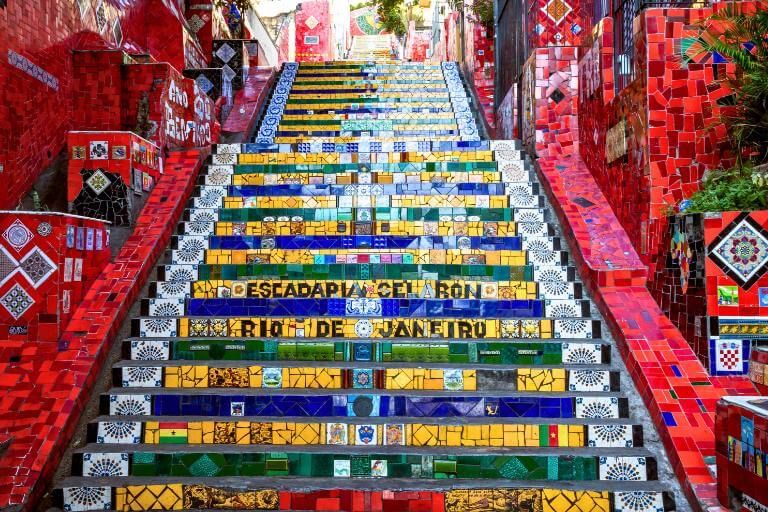
Selarón started to work on the steps back in 1990, using tiles from over 60 countries. His project completely changed the rundown neighbourhood into a creative hub and a tourist spot. They are located between Rua Joaquim Silva in Lapa and Rua Pinto Martins in Santa Teresa and are a must-see for photos and people-watching.
6. Discover the Parque Lage
As far as things to do in Rio de Janeiro go, you can’t go wrong with a stop at the Parque Lage at the foot of Corcovado Mountain. This former mansion is one of the best places in Rio for relaxing with a coffee or starting a light hike into Tijuca National Park.
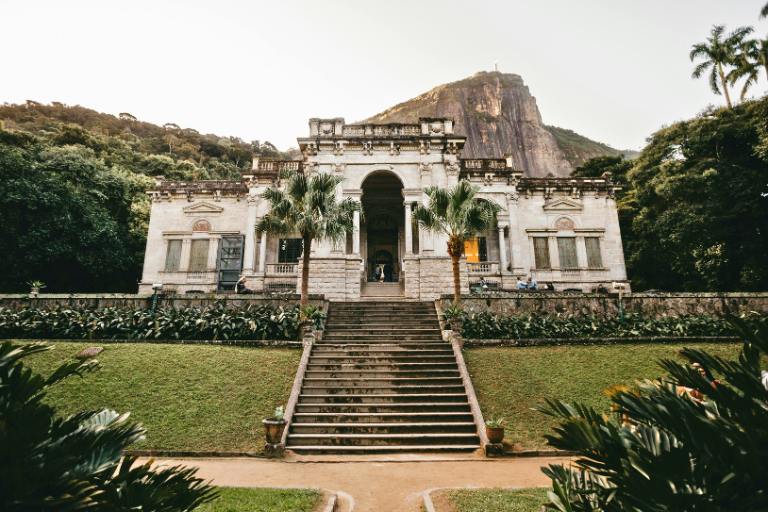
The mansion was built in the 19th century by Henrique Lage, a Brazilian entrepreneur, for his Italian opera singer wife, Gabriella Besanzoni. The estate is a feast for the senses and a glimpse into the life of Brazil’s rich and famous. Once a sugar mill during colonial times, the property is a public park with trails, gardens, and lakes.
7. Discover the Jardim Botânico
The Botanical Garden (Jardim Botânico) is a perfect place to see Rio’s natural beauty. Founded in 1808 by King John VI, these gardens are home to over 6,500 plant species across 340 acres. The garden’s main path is lined with towering royal palm trees that seem to touch the sky. Look for the Japanese garden with its red bridge and koi pond. The garden sits at the base of Corcovado Mountain, offering breathtaking views of Christ the Redeemer from a different angle.
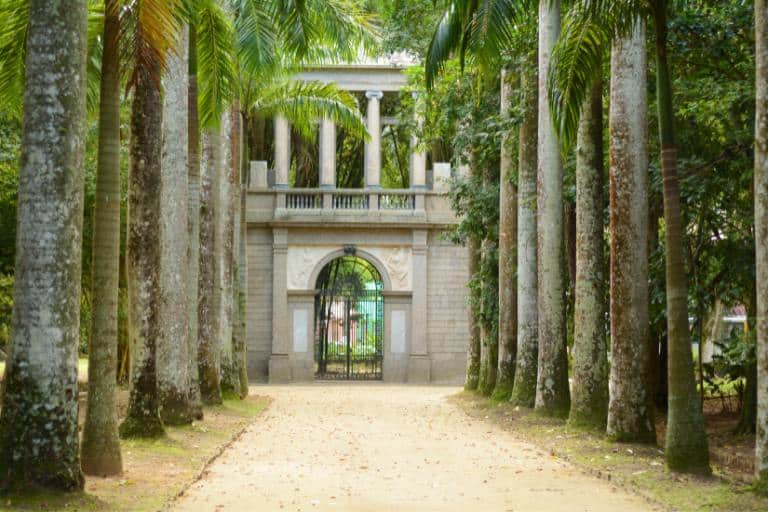
Bird watchers will love this spot – toucans, hummingbirds, and many other birds call the garden home. The lush vegetation makes you feel miles away from the busy city, though you’re right in the heart of Rio. The house itself houses the Escola de Artes Visuais do Parque Lage, an art school that hosts free art exhibitions and performances. The on-site restaurant is a perfect stop for breakfast or lunch, whether you’re planning to hike to the statue of Christ the Redeemer or escape the chaos of the city.
8. Visit the Museum of Tomorrow
One of the best things to do in Rio is to visit the Museum of Tomorrow. This modern museum sits in Praça Mauá, where the city meets the bay. The building itself looks like a spaceship with its white curved shape. Inside, interactive exhibits teach about climate change, population growth, and what our world might look like years from now.

The museum uses games, videos, and hands-on displays that make science fun for all ages. It’s a great way to escape the heat or fill rainy days during your trip. Check opening hours and tickets before you go (the museum is closed on Mondays).
9. Take a cable car to Sugarloaf Mountain
To indulge in some of the best views of Rio de Janeiro, take a cable car to Sugarloaf Mountain. Sugarloaf’s peak rises 296 meters above Guanabara Bay and overlooks the Atlantic Ocean. This is definitely one of the most impressive things to do in Rio de Janeiro.
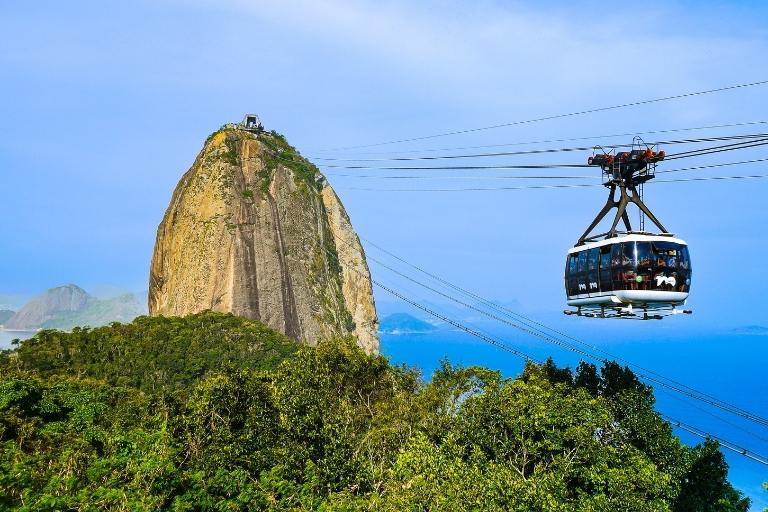
Cable cars run the 1,400-metre journey every 20 minutes between the Pão de Açúcar and the Morro da Urca peaks. You can buy tickets at the station located in Praia Vermehla.
10. Visit the Theatro Municipal (Municipal Theatre)
Enjoy an evening out or join a guided tour of one of the city’s most imposing and beautiful buildings. The Theatro Municipal, inaugurated in 1909 and inspired by the Paris Opéra of Charles Garnier, is a Brazilian cultural institution. You can enjoy choir, symphony, orchestra and ballet performances by renowned international and local artists here. If cultural outings are your thing, this is definitely the spot to add to your list of things to do in Rio de Janeiro.
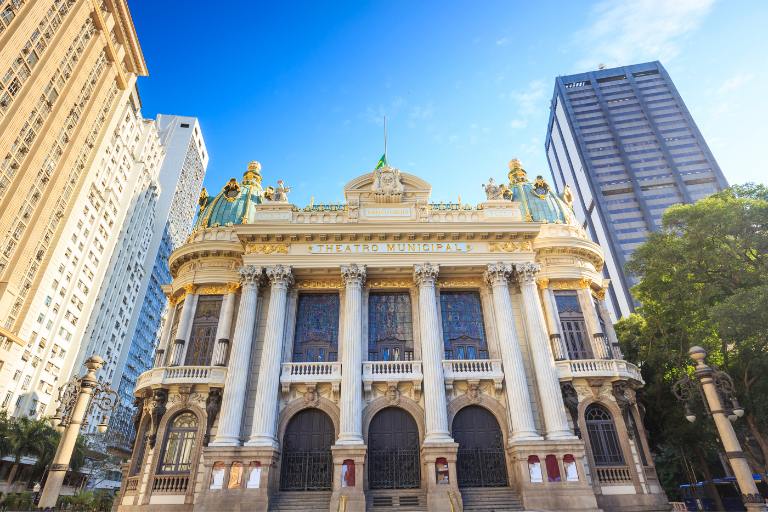
11. Fall in love with the Real Gabinete Português de Leitura
The Real Gabinete is one of the most beautiful libraries in the world. Opened in 1837, it was founded by Portuguese immigrants and political refugees. Their vision was to promote culture among the Portuguese community in what was then the capital of the Empire of Brazil.
You can visit for free during the week, between 9 a.m. and 6 p.m. Make sure to check out the impressive Portuguese Reading Room, home to 350,000 works from the 16th to 18th centuries. There is also a small collection of sculptures, paintings and coins. The building is in the Portuguese Manueline style and is worth adding to your list of things to do in Rio de Janeiro.
12. Indulge in the architecture of Rio de Janeiro
The architecture here was the first thing that surprised me about Rio. Architecture here is definitely interesting, and you should add that to your list of things to do in Rio de Janeiro. It has a more European feel than anything in North America.
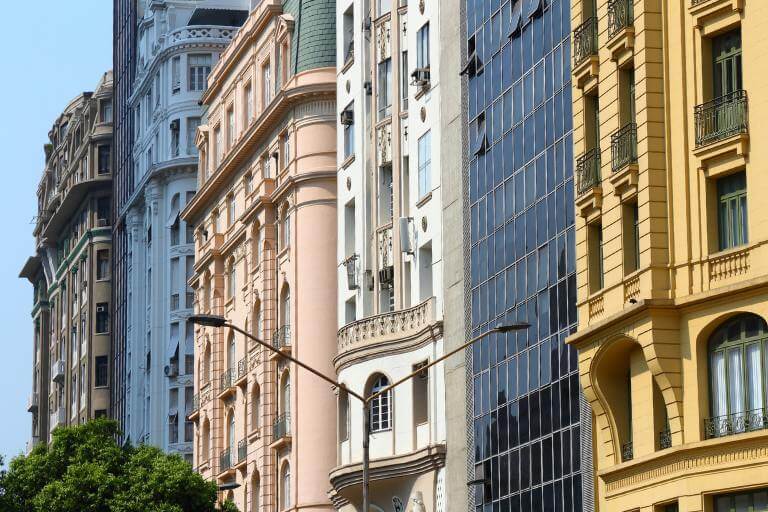
When you think about it, countries like Canada and the U.S. were settled by people who often escaped poverty, persecution and many other unpleasant things back home. They wanted a new start and an opportunity to leave the old world behind, including how they built their cities. There was no need to preserve the old world as the new one offered a new start.
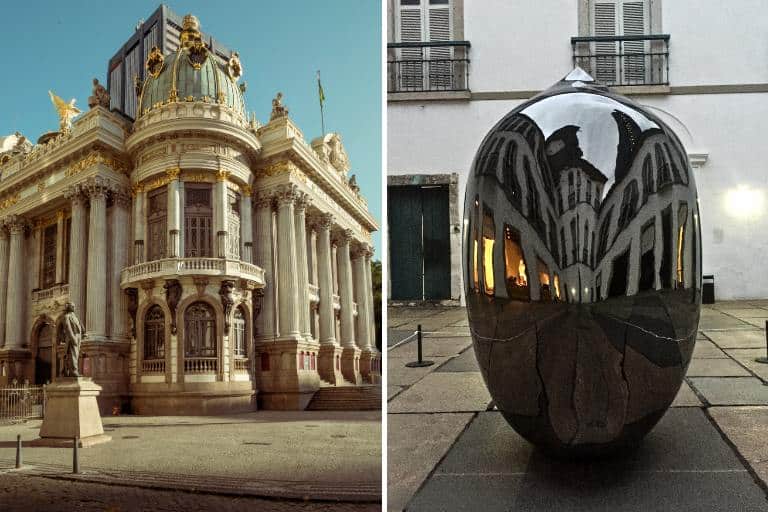
South America was mainly a conquest. Those who came here seeking riches did so in the name of their kingdoms. They aimed to extend that old-world power and ways of life into their new colonies. Much like their Spanish counterparts, the Portuguese searched for wealth and conquest. As a result, much of the architecture here in Rio is reminiscent of Portugal. Although Rio de Janeiro is over 500 years old, much of the old architecture hasn’t survived due to various redevelopments and politics. What has is definitely worth checking out.
13. Experience the Santa Teresa neighbourhood
Santa Teresa is one of Rio’s most charming areas. This hilltop neighbourhood once housed the city’s wealthy families. Today, it’s home to artists, musicians and small shops. The best way to see Santa Teresa is on foot. The cobblestone streets wind past colourful old houses and small art galleries. Stop by the Parque das Ruinas for beautiful views of the entire city.
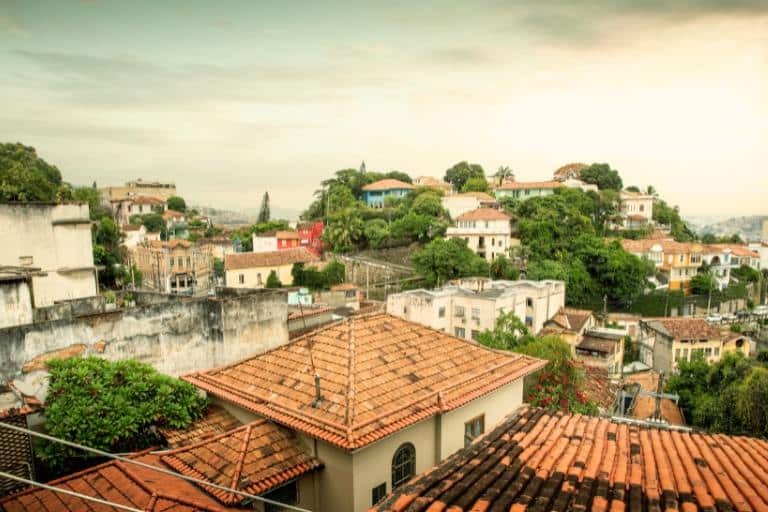
Don’t miss a ride on the Santa Teresa tram, one of the oldest street railways in the world. The yellow tram rattles through the streets, giving riders panoramic views of the city below. The neighbourhood comes alive at night with live music spilling from small bars. For a unique experience, try one of the area’s small restaurants serving traditional Brazilian food.
14. Relax at Lagoa Rodrigo de Freitas
This large lagoon sits in the heart of Rio’s south zone. Locals call it simply “Lagoa.” A 7.5-km path circles the water, making it perfect for walking, biking, or running. Sunset at Lagoa is almost akin to a spiritual experience. The mountains reflect in the still water as the sky turns pink and orange.
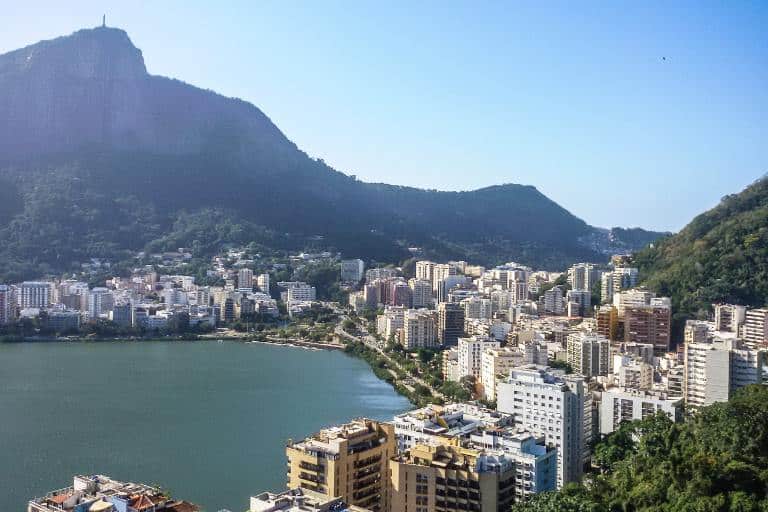
You can rent a paddle boat or join a stand-up paddleboard class if you want to get out on the water. You’ll also find many restaurants with outdoor seating around the lagoon if you prefer to enjoy the view without getting in the water. Try fresh seafood while watching people go by. On weekends, you’ll find street food vendors selling snacks and coconut water.
15. Climb Pedra da Gávea
For adventure seekers, hiking Pedra da Gávea is one of the best things to do in Rio. This massive rock sits 842 meters above sea level, offering stunning views of the city’s beaches and mountains. The hike takes about three hours each way and includes some challenging sections. Hiring a local guide is the best option for safety.

The trail passes through tropical forests before reaching the rocky summit. From the top, you can see Barra da Tijuca, the Tijuca Forest, and both the Atlantic Ocean and Guanabara Bay. It’s worth the climb for what might be the best view in all of Rio.
16. Explore the Imperial Palace
The Imperial Palace in Rio shows off Brazil’s royal past. Once home to the Portuguese royal family, this building now houses the National Museum of Brazil. When you step inside, you’ll see how Brazil’s rulers lived during the 19th century. The palace rooms display royal furniture, art, and items from daily palace life. The garden outside gives you a quiet break from the busy city.
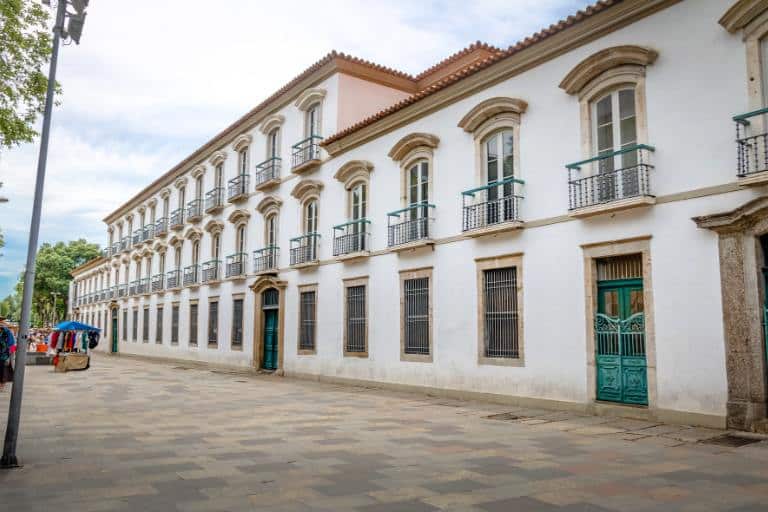
The palace sits in the heart of downtown Rio, making it easy to visit along with other attractions. Plan to spend about two hours exploring the exhibits. The building’s architecture alone is worth seeing, with its mix of European and tropical styles.
17. Visit Centro Cultural Banco do Brasil
Centro Cultural Banco do Brasil (CCBB) is a top spot for art and culture fans. This grand building was once the headquarters of the Bank of Brazil, but now hosts rotating art shows, films and theatre. The building itself is a work of art with its dome and marble columns. Inside, you’ll find several floors of exhibits that change every few months. Most shows are free, making this one of the best free things to do in Rio de Janeiro.
CCBB sits in the city’s financial district. After seeing the exhibits, stop by the café inside for a coffee or snack. The gift shop sells unique items related to current exhibits. Check the schedule online before you go, as events change often. The center is closed on Tuesdays and gets busy on weekends. If you love art, put this on your must-see list for Rio.
18. Experience Maracanã Stadium
No trip to Rio is complete without seeing Maracanã Stadium, one of the most famous sports venues in the world. This massive stadium has hosted World Cup finals and was the main site for the 2016 Summer Olympics.
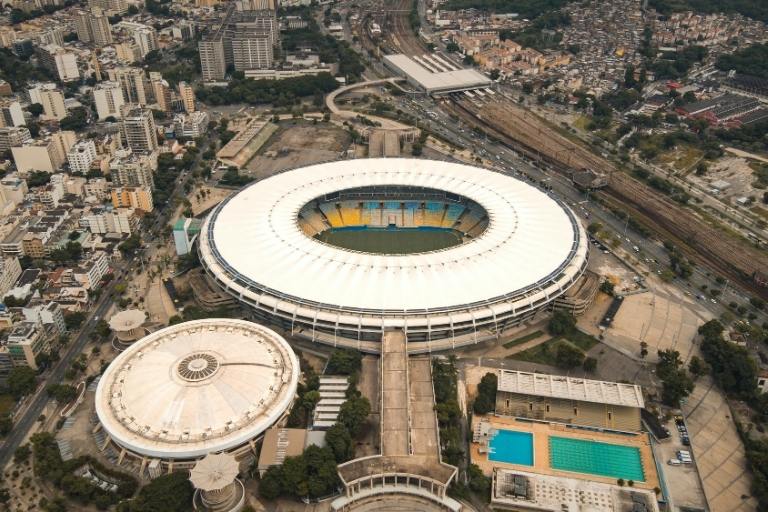
Take a guided tour to see the locker rooms, press box, and walk through the players’ tunnel. Standing on the field where legends like Pelé and Zico played is a thrill for sports lovers. If you can catch a game between local teams like Flamengo, Fluminense, Botafogo, or Vasco, do it! The passion of Brazilian people for soccer is unlike anything else. The singing, drums, and cheering create an atmosphere you’ll never forget.
The stadium sits about 15 minutes by metro from downtown Rio. Tours run daily except when games are scheduled. This is one of the best things to do in Rio de Janeiro for sports fans and anyone who wants to understand Brazilian culture.
Tips for getting to Rio
Most visitors to Rio arrive at Galeão International Airport (GIG), which sits about 20 km from the city center. The smaller Santos Dumont Airport (SDU) handles primarily domestic flights. From Galeão, you have several options to reach your hotel. Taxis have fixed rates for different parts of the city – look for the official yellow taxis or book one at the airport counters. Uber works well and often costs less than taxis.
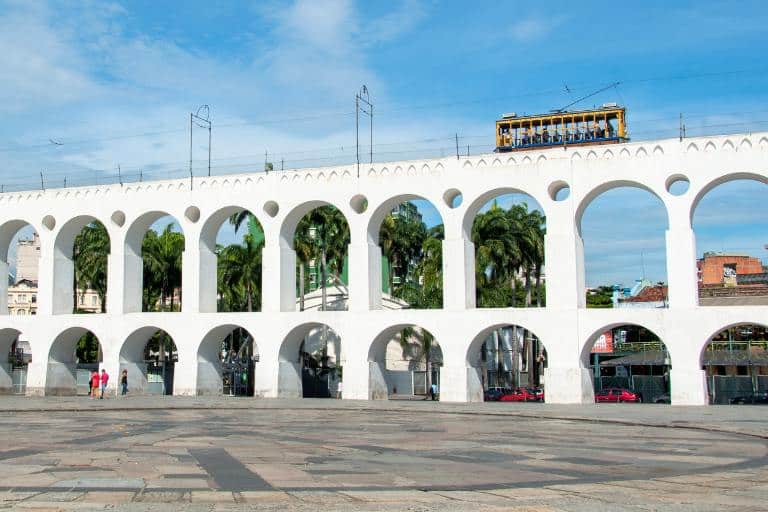
The BRT (Bus Rapid Transit) is a cheaper option that connects the airport to many parts of the city. If you’re feeling adventurous, you can also opt to take a local bus to the city center, but they’re not ideal with luggage. If you’re coming from elsewhere in Brazil, long-distance buses arrive at Rodoviária Novo Rio, the main bus terminal. From there, take a taxi or Uber to your hotel, as the area around the station isn’t the safest.
Where to stay in Rio de Janeiro
Copacabana and Ipanema are perfect for first-time visitors who want to be near famous beaches. These areas have many hotels at all price points, from luxury beach-front resorts to small family-run spots. The neighbourhood of Leblon, next to Ipanema, is more upscale and quiet but still close to white sand beaches.
Botafogo gives you a more local feel while still being close to the main attractions. Many young Brazilians live here, and you’ll find great bars and restaurants. Hotel prices are often lower than in beach areas. For luxury, head to Barra da Tijuca where you’ll find newer hotels and pristine beaches with fewer crowds. This area is farther from the city center but has large shopping malls and wide streets.
Santa Teresa is ideal if you’re seeking charm over convenience. Small boutique hotels in old mansions give you a taste of Rio’s past. The views are amazing, but be ready for steep hills.
Staying safe in Rio de Janeiro
Safety concerns shouldn’t stop you from visiting Rio, but smart planning helps avoid problems. Like many big cities, Rio has areas that are safer than others. During the day, most tourist spots are well guarded. Police presence is strong in places like Copacabana, Ipanema, and near main attractions. Still, keep these tips in mind:
- Take only what you need when going out. Leave extra cash, cards, and your passport in your hotel safe.
- Carry a copy of your passport instead of the real thing.
- Keep phones and cameras close to your body, not in back pockets or open bags.
- At night, use Uber or taxis instead of walking, even for short trips. This is safer and helps you avoid getting lost. If you must walk at night, stick to well-lit streets where other people are around.
- The beaches are fun but require care. Don’t leave items unattended while swimming. Beach theft is common, even in busy areas. Many hotels offer beach towels, so you don’t need to bring your own valuable ones.
- Avoid wearing flashy jewelry or watches that might draw attention. Dress like locals when possible – board shorts, t-shirts, and flip-flops blend in better than tourist gear.
- Learn a few basic Portuguese phrases. Even simple words like “obrigado” (thank you) and “por favor” (please) go a long way. Locals appreciate the effort and may be more willing to help if needed.
- The favelas (hillside communities) are part of Rio’s culture, but not places tourists should wander into alone. If you want to learn about these areas, book a tour with a trusted company that works with local guides.
- Public transport is generally safe during the day, but can get very crowded. Keep a close eye on your things, especially on buses. The metro is usually cleaner and more comfortable than buses.
Rio has made big strides in safety since hosting the World Cup and the Olympics. Tourist police speak English and can be found in the main areas. Their stations are marked “DEAT” (Special Police Department for Support of Tourism).
Don’t let safety worries keep you from enjoying one of the world’s most beautiful cities. Most visits to Rio happen without any problems. Being aware but not paranoid is the best approach for a great trip to this vibrant city.
Final thoughts on things to do in Rio de Janeiro
Rio has so many contradictions. Its past, steeped in wealth, power and tradition, set up the modern way of life. Many people live in severe poverty, while others live in extreme luxury. The rich and the poor are divided by class, race and income. The extremes are stark and can be disheartening. It definitely isn’t a perfect system.
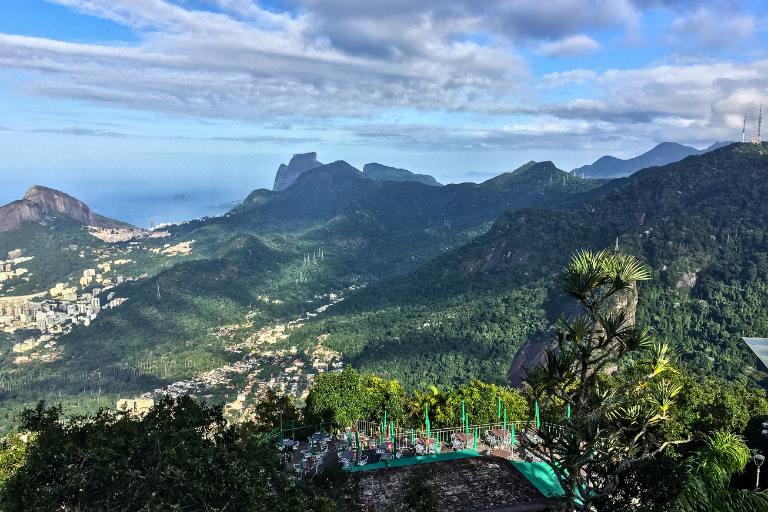
Rio is also full of energy and has a lot of tension under the surface. Despite it all, I felt welcomed here. The people I met in Brazil were friendly and helpful, and many of them have become my friends. This has definitely become one of my favourite places.
There are many unique experiences and things to do in Rio de Janeiro, from famous beaches to lush parks, from samba beats to royal palaces. Whether you’re in for a few days or a few weeks, there’s always more to explore. So, what are you waiting for?

